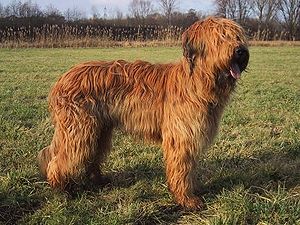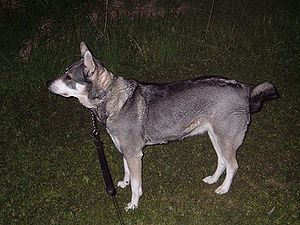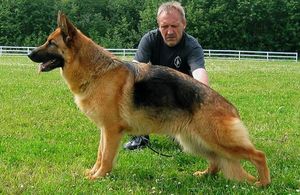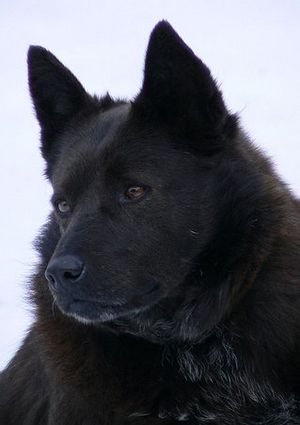 |
| Vital Statistics: |
| Place of Origin: France |
| Group: Herding |
| Height: males, 23-27 in., females, 22-25 in. |
| Weight: 60-90 lbs. |
| Life span: 10-12 yrs. |
| Trainability: high |
| Good with children: yes, with early socialization |
| Good with other pets: yes, with early socialization |
What is the origin of the Briard?
A French breed, the Briard has a 1200 year old history. Legend has it that Charlemagne and Napoleon owned Briards. The Briard was brought to the U.S. by Thomas Jefferson in 1789. There is a French tradition of beginning the names of all Briards born in the same year with the same letter. Some American breeders still follow this tradition.
What does the Briard look like?
The Briard is a large dog, 22-27 inches tall and 60-90 lbs. depending on gender. Ears are cropped where this practice continues, but more natural ears are being seen. The nose is black. There are distinctive double dewclaws on the rear legs. The tail reaches the hocks, curved up at the end like the letter “J”. The coat is coarse and very long and lies flat. The undercoat is fine and tight. Colors are black, shades of grey and tawny. The Briard should be brushed thoroughly once a week which may take a couple of hours.
What is the temperament of the Briard?
Briards instinctively pick up on the moods of their humans, they are that compassionate. This is a high energy dog and needs an owner willing to devote time and equal energy to it. Early obedience training and constant socialization with children and pets will help avoid any problems. The Briard needs to know from the start that you are the leader. The Briard wants to be close to its family and is not happy left alone outdoors. Protective of the family, the Briard can be wary of strangers. This dog will act as your shadow, following you everywhere.
What are the uses of the Briard?
The Briard was bred to be a herding dog. You might want to investigate where herding trials are held and introduce your Briard to sheep there. With positive training and patience, the Briard can compete in obedience and agility trials.
Possible Health Issues
Bloat/stomach torsion, eye disorders, epilepsy, hypothyroidism, allergies, hip/elbow dysplasia, von Willebrand’s disease.
- Australian Cattle Dog
- Australian Kelpie
- Australian Shepherd
- Bearded Collie
- Beauceron
- Belgian Sheepdog – Groenendael
- Belgian Tervuren
- Bergamasco
- Berger Picard
- Blue Lacy
- Border Collie
- Bouvier des Flandres
- Cardigan Welsh Corgi
- Catahoula Leopard Dog
- Collie
- English Shepherd
- Entlebucher
- Finnish Lapphund
- German Shepherd
- Hovawart
- Icelandic Sheepdog
- Laika
- Lancashire Heeler
- Miniature American Shepherd
- Mudi
- Old English Sheepdog
- Pembroke Welsh Corgi
- Polish Lowland Sheepdog
- Puli
- Pumi
- Pyrenean Shepherd
- Shetland Sheepdog
- Standard Schnauzer
- Swedish Vallhund



